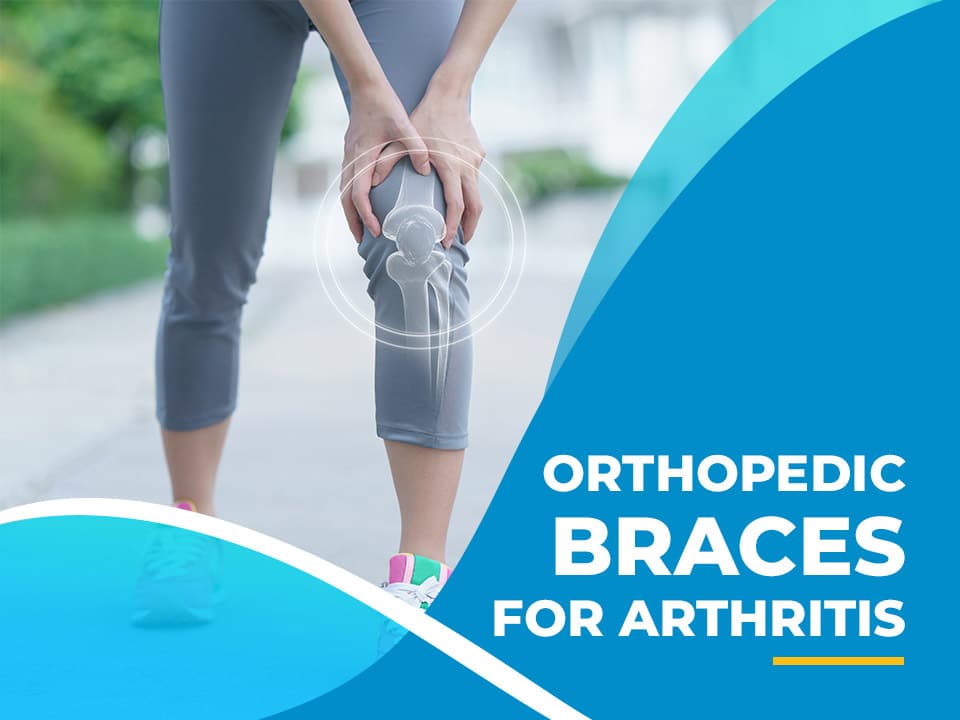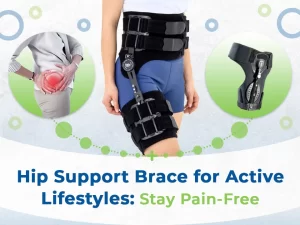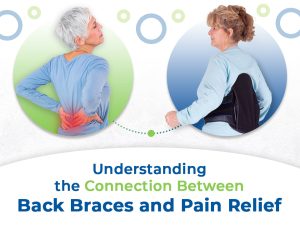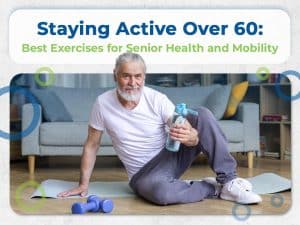Here I am going to show you the benefits of orthopedic Braces for arthritis. When an injury affects your feet, ankles, knees, hips, or lower back, it can produce a chain reaction of changes. These changes can affect how you walk, sit, stand, and move. With every adjustment your body makes to avoid pain or compensate for an injured body part, the potential to make the problem worse or cause new problems arises.
Arthritis is one of the most common ailments in the world. It affects a large number of older people and can, in some cases, be extremely debilitating. Unfortunately, it affects approximately 58.5 million Americans and is only becoming more prevalent. Thankfully, treatment options are available. One of the best things that you can do is invest in an orthopedic brace for arthritis.
There are lots of different types of orthopedic braces available to people who need them. So what type of patient needs them? Here are the 6 body parts that braces are built for and the types of patients that can benefit from them.
Feet Braces
Having healthy feet enhances our day-to-day lives in a way that we take for granted. Whether you love doing activities that are hard on your ankles, like playing sports or hiking, or even if you have a job that requires a lot of time on your feet during the day, feet braces can offer great relief and support.
Feet braces are a form of support to address the effects of alignment issues, nerve damage, or a neurological condition by creating stability, improving walking, and helping to keep you mobile.
Ankle Braces
If you’re recovering from an injury or trying to prevent one, an ankle brace can be extremely helpful. They’re designed to put the right amount of pressure on the ankle to support the ligaments and restrict abnormal motion.
Ankle injuries that benefit from orthopedic braces include sprains and strains. They also help tremendously with rehabilitation after removing a cast. Weak ankles can also benefit from braces as they improve overall stability, which will help prevent another ankle sprain.
Knee Braces
The knee is the most common body part that experiences problems. People often use knee braces for post-injury therapy. They can also be used by active individuals who want to protect this joint from injuries.
A knee brace might help reduce pain by shifting your weight off the most damaged portion of your knee. Wearing a knee brace can improve your ability to get around and help you walk comfortably.
Back Braces
Something as simple as bending over to tie your shoe can result in a back injury if you’re not careful. These types of injuries can require a brace to help the body heal. Other back injuries that require a brace include chronic pain, strains, and posture issues such as scoliosis. People who need lumbar support or suffer from back pain due to pregnancy can also opt for a back brace to get relief.
A back brace can add stability when the low back is injured or has a weakened spinal structure. By holding the torso in a safe, supportive posture, a back brace can help provide a healthy healing environment for the current injury and prevent additional damage.
Wrist Braces
Wrist and forearm injuries are becoming more and more common nowadays since people are typing and texting more, leading to carpal tunnel syndrome, among other injuries. Braces can also be helpful for those with injured wrists, tendinitis, and sprains. They’re also great for protecting the wrist and forearm after removing a cast.
Wrist braces support the wrist in a neutral position, which offers relief from discomfort and pain. They also prevent repetitive movements, which is helpful for conditions such as arthritis and tendinitis. Some wrist braces also reduce compression of the median nerve.
Elbow Braces
Capsulator shifts, soft tissue strains and sprains, rotator cuff issues, ligament issues, tendon problems, or fractures are all types of injuries that can happen to the elbow. People who have experienced elbow injuries, surgery, or cast removals can make use of an elbow brace.
Orthopedic braces help stabilize the parts of your body that need to heal and grow stronger. They also protect joints from further damage.
Read more: Knee Bracing: 5 Benefits Of Using Knee Orthosis For Osteoarthritis
Why Should You Use Orthopedic Braces?
Orthopedic surgeons, neurosurgeons, and sports medicine specialists know that the most powerful treatment for problems that affect your joints, motor function, gait, and balance is bracing. Here are the main advantages of these drug-free and non-invasive treatment solutions.
1. Increase Stability
Braces help maintain proper alignment in your joints to prevent unwanted movements. They can be worn inside your shoes or boots, on your wrist, or over your knee to keep you stable.
Bracing can also help you lift, swing, and plant your foot if you suffer from drop foot. An external body brace can help correct your curved spine if you have scoliosis.
2. Pain Reduction
Joint instability often produces inflammation and can lead to tendonitis or bursitis. Osteoarthritis and rheumatoid arthritis also cause painful swelling in the joints. Bracing supports the joints so they move in a smoother and more controlled fashion that avoids pain.
By shifting the weight away from your painful joints and offering compression to bring down swelling, braces can be one of the most effective tools for managing arthritis pain.
3. Shock Absorption
Orthotics that slip into your shoes can absorb each step’s shock. Every heel strike can cause pain that travels up your legs believe it or not. If you have weak or fallen arches, or your arches are too high, you’ll feel the effects in your ankles, knees, hips, and back.
4. Lower Risk of Injury
Athletes often wear braces or orthotics to prevent injuries or protect previously injured body parts. For example, volleyball players are known to use ankle braces to prevent rolling. Bracing can add extra strength and support.
5. Prevent Disease Progression
Certain medical conditions get worse without the use of a medical brace. Scoliosis, degenerative disc disease, osteoarthritis, and rheumatoid arthritis are a few that require external aid to slow or stop their advancement.
6. Immobilize a Fracture
Perhaps the most familiar type of orthotic is a cast or splint for immobilizing a broken bone. Fractures need to remain completely still and stable to heal correctly, so a rigid splint or full fiberglass cast can support and accelerate healing.
7. Accommodate Deformities
If you have foot deformities, you know how difficult it is to find shoes that fit and feel comfortable. Custom orthotics are made to fit your feet perfectly and accommodate hammertoes, bunions, heel spurs, or any other shape or protrusion that causes discomfort.
8. Pressure Reduction
One of the main functions of a brace is to reduce pressure on the affected joint. This pressure is often the cause of the pain, so a brace can almost immediately relieve said pain. Reducing pressure will also lead to reduced swelling.
9. Support
People who suffer from arthritis also tend to suffer from disuse of their affected body parts (wrists, knees, etc.) due to the amount of pain that they experience. This pain and disuse will lead to weakness in the arthritic joints. A medical brace provides the support you need to go about your daily activities and rebuild strength in your joints.
10. Improving Physical Function
When you put together the benefits of reduced pressure and overall joint support, you’ll be able to enjoy a more active and pain-free lifestyle than before orthopedic brace treatment. When your joints feel better, you’ll have the confidence to engage in the activities that you love, including walks, runs, and even light exercise.
Bottom Line
Orthopedic braces are an easy way for you to regain mobility and live the pain-free lifestyle that arthritis takes from you. Engage with the world without being hindered by your arthritic condition. You deserve it.
Our both orthopedic and back braces feature adjustable compression systems and are available for lower and mid-back support. If you’re not sure what product is right for you or if you’re eligible for insurance coverage, Artik Medical Supply will provide the guidance you need. We can even communicate with your doctor to determine the best back brace for you.
Contact us today to check for insurance coverage.







